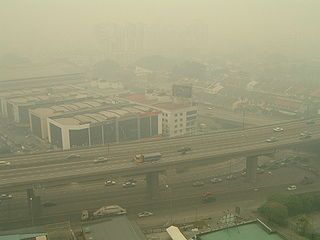Establishing the Greenest Source of Energy

One conclusion that anyone would draw is that anything except fossil fuels – especially coal – looks pretty darn good – and that’s perfectly valid. Yet, if one wishes to split hairs, here are a few of many things one may consider:
• Grams of CO2/KWh is an important criterion, but it’s only one. Further hurting coal is the list of other toxic byproducts like NOx, SOx, heavy metals, and many different and dangerous radioactive isotopes.
• Solar and wind are “green” by any standards, but calculating this “greenness” is complicated by many factors: land use, displaced animal habitats, the danger to birds and bats, etc. The fuel is free, and converting it to energy has virtually zero ecologic costs, but that’s only a part of the equation.
On balance, renewable energy, in any of its forms, is the deal of the century in terms of the environment. And once our society begins to put a fair price on the dirtier resources, this will become abundantly clear to everyone.

We pay about $700 billion every year to unstable (and often hostile) regimes for their oil – that’s not to include the lethal, bodily and psychologically devastating, exorbitant and extortive costs of our troops defending our access by occupations, drones, and hundreds of foreign bases.
Alternatively, we could build ten thousand Concentrating Solar Power (CSP) plants, each a mile square – completely proven power generation technology – dotted along our Sunbelt from Southern California to Georgia.
Using our proven storage technologies – such as molten salt, pumped hydro or Advanced Rail Energy Storage (ARES) – and transmitting power over High-Voltage Direct-Current (HVDC), those plants will provide all the electricity currently consumed all across the entire continental US. This system will also scale up nicely to power a new electric infrastructure for freight, as well as public and individual transportation. Advances in battery technology will also very soon compete in the grid energy storage arena
Those 10,000 plants will cover less than one third of a percent of the land area in the lower 48 states (about the total area of the little state of Vermont), and at $600 million per square mile, those ten thousand CSP plants will total $6 trillion (plus a few hundred billion for infrastructure improvements). It sounds like a lot of cash, but that’s just nine years of our foreign oil expenses (and that’s without even mentioning any military savings) – and it’ll give us a permanently maintainable system in place that provides cheap, clean and sustainable energy for all our nation’s electricity.
It’s a big project, but it’s worth the cost. From there, it will then be a relatively small matter to scale that CSP system up for all the rest of our energy needs.
“If that’s true,” you say (and it is true), “why aren’t we doing it?”
Ask why seat belts took decades to become a required standard in cars.
Ask why US vehicle fuel efficiency still drags behind Japan and Europe, and why we’re still far behind the standards that we ourselves achieved decades ago during WWII.
American broadband speed (and coverage) is yet another example of the willful restraint of technology that’s been inflicted on us by entrenched vested interests.
Unless they’re forced by law to behave otherwise, corporations will do only whatever will make them or save them a buck, no matter what the (temporarily) externalized consequences.
CSP is completely doable and is, in fact, inevitable. It’s already on the grid in California, Arizona, Spain and the United Arab Emirates, and many other places around the globe. The vast majority of the material needed is concrete, steel and glass. The present barriers against this elegant solution are neither technical nor resource-based, nor even financial – they’re purely political barriers that are erected and reinforced by bribery, and by those intractable fossil interests that do the bribing.
Isn’t it about time We the People stood up, and put an end to bribery, and to the ruin it spreads across our society and the world?